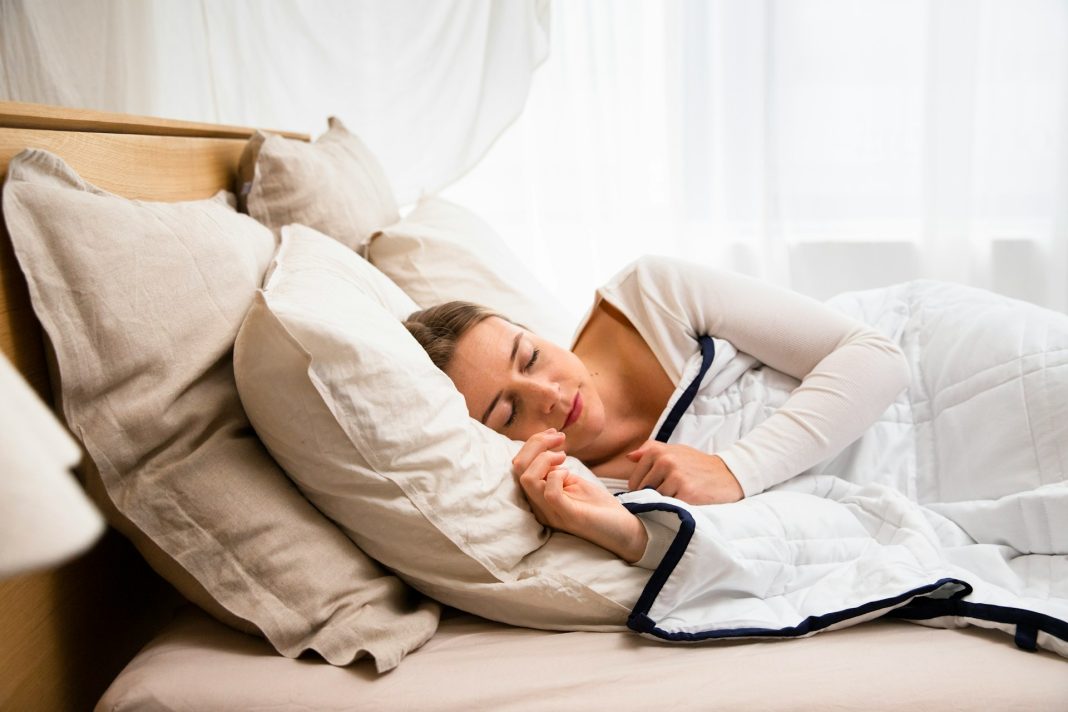You climb into bed, swipe through your phone “for just a minute,” and next thing you know, it’s 2 AM and you’re wide awake, overthinking everything from work emails to whether you locked the door.
Sound familiar?
You’re not alone. Millions of women struggle with poor sleep, and the effects go beyond grogginess. Low-quality rest affects your skin, your mood, your metabolism—even your hormones.
But here’s the good news: You don’t need a complete life overhaul to reclaim your rest. Sometimes, it’s the smallest changes that lead to the most profound results.
Ready to feel refreshed—not fried—in the morning? Let’s talk about 7 realistic, easy-to-implement changes that can transform how you sleep—starting tonight.
Set a Sleep-Wake Schedule – And Actually Stick to It
Yes, even on weekends. (Sorry!)
Your body runs on a circadian rhythm, an internal clock that thrives on consistency. When you shift your sleep and wake times too often, your brain gets confused—and melatonin (your sleep hormone) production goes haywire.
The Fix:
- Choose a realistic bedtime and wake time and stick to it within 30 minutes every day.
- Resist the temptation to “sleep in” past 60–90 minutes on weekends—it only throws off your Monday.
💬 Real-Life Tip: Try setting a recurring phone reminder for your “wind-down hour” instead of just your wake-up alarm.
🧠 Science Spark: A 2017 study published in Scientific Reports found that irregular sleep patterns are linked to poor academic performance and daytime fatigue, even when total sleep hours were the same.
Dim the Lights – And the Screens
Here’s the science in a sentence: Light = alert brain. Darkness = sleepy brain.
Unfortunately, blue light from phones, laptops, and even LED bulbs tricks your brain into thinking it’s still daytime. This suppresses melatonin and delays your ability to fall—and stay—asleep.
The Fix:
- Install blue-light filters on all screens (most phones have this built-in).
- Switch to warm-toned lighting at night (think amber night lights or Himalayan salt lamps).
- Shut off screens at least 60 minutes before bed.
💬 Try This: Replace late-night scrolling with journaling, reading, or a podcast with your eyes closed.
Create a “Wind-Down” Ritual That Signals Sleep
If you go from emails to Netflix to bed in 5 minutes, your body hasn’t had time to shift gears. A consistent wind-down routine teaches your brain: It’s time to rest.
The Fix:
- Choose 2–3 soothing activities you do every night. Examples:
- Skincare or a warm shower
- Herbal tea (like chamomile or valerian root)
- Light stretching or yoga
- A few pages of a book (preferably not a thriller!)
- Try a guided sleep meditation or breathing technique like 4-7-8.
💬 Real-Life Glow-Up: Many women report their skin clears up faster when sleep improves—because skin cells regenerate while you rest.
Treat Your Bedroom Like a Sleep Sanctuary (Not a Multipurpose Room)
Your brain needs to associate your bed with one thing only: rest. Not work. Not TV. Not doomscrolling.
The Fix:
- Make your bed a device-free zone (or at least switch to “Do Not Disturb” mode).
- Keep your room cool—between 60–67°F (16–19°C) is ideal for most.
- Use blackout curtains or an eye mask if there’s light pollution.
- Add calming elements: lavender spray, a sound machine, or cozy bedding.
💬 Budget Tip: You don’t need a total bedroom makeover. Start with just one change—like blackout curtains or a diffuser.
Be Mindful of What You Eat & Drink After 6 PM
Food is fuel—but eating too late, especially heavy or spicy meals, can sabotage your sleep. Same goes for caffeine, alcohol, and even dark chocolate.
The Fix:
- Avoid caffeine after 2 PM (even if you think you’re not “sensitive” to it).
- Cut back on late-night sugar, which spikes insulin and energy.
- If you’re hungry, go for light, sleep-friendly snacks: a banana with nut butter, or yogurt with almonds.
💬 Fun Fact: Tryptophan, an amino acid found in turkey, oats, and nuts, helps promote sleep by boosting serotonin and melatonin.
Offload Your Thoughts Before You Hit the Pillow
Racing mind? You’re not alone. Women often lie in bed rehashing conversations, building to-do lists, or worrying about tomorrow’s deadlines.
The Fix:
- Keep a “brain dump” journal beside your bed. Every night, write down your thoughts, worries, or to-dos.
- Try the 1–3–5 method: jot 1 big thing, 3 medium tasks, and 5 small ones you want to tackle tomorrow—then let it go.
💬 Why It Works: Putting your thoughts on paper gives your brain permission to stop processing them during sleep.
Know When to Get Up (Instead of Forcing Sleep)
If you’ve been lying in bed for 30 minutes and still can’t fall asleep, don’t stay there stressing—it trains your brain to associate bed with anxiety.
The Fix:
- Get up, leave the bedroom, and do something calming (no screens). Try a book or stretching.
- Only return to bed when you feel sleepy again.
💬 What to Avoid: Checking the clock! Clock-watching creates a feedback loop of anxiety that only makes falling asleep harder.
Tiny Changes, Big Dreams
Better sleep isn’t a luxury—it’s a non-negotiable foundation of your mental health, beauty, productivity, and joy.
And while we all dream of that elusive “perfect night’s sleep,” the truth is, rest is built in layers—through daily habits that honor your body’s natural rhythms.
Tonight, choose just one of these small tweaks and commit to it.
Maybe it’s dimming your lights after 8 PM. Maybe it’s finally journaling before bed. Maybe it’s putting your phone across the room.
Whatever it is, you’re taking a step toward deeper rest, better mornings, and a version of you that feels truly restored.
Sweet dreams—literally. 😴



